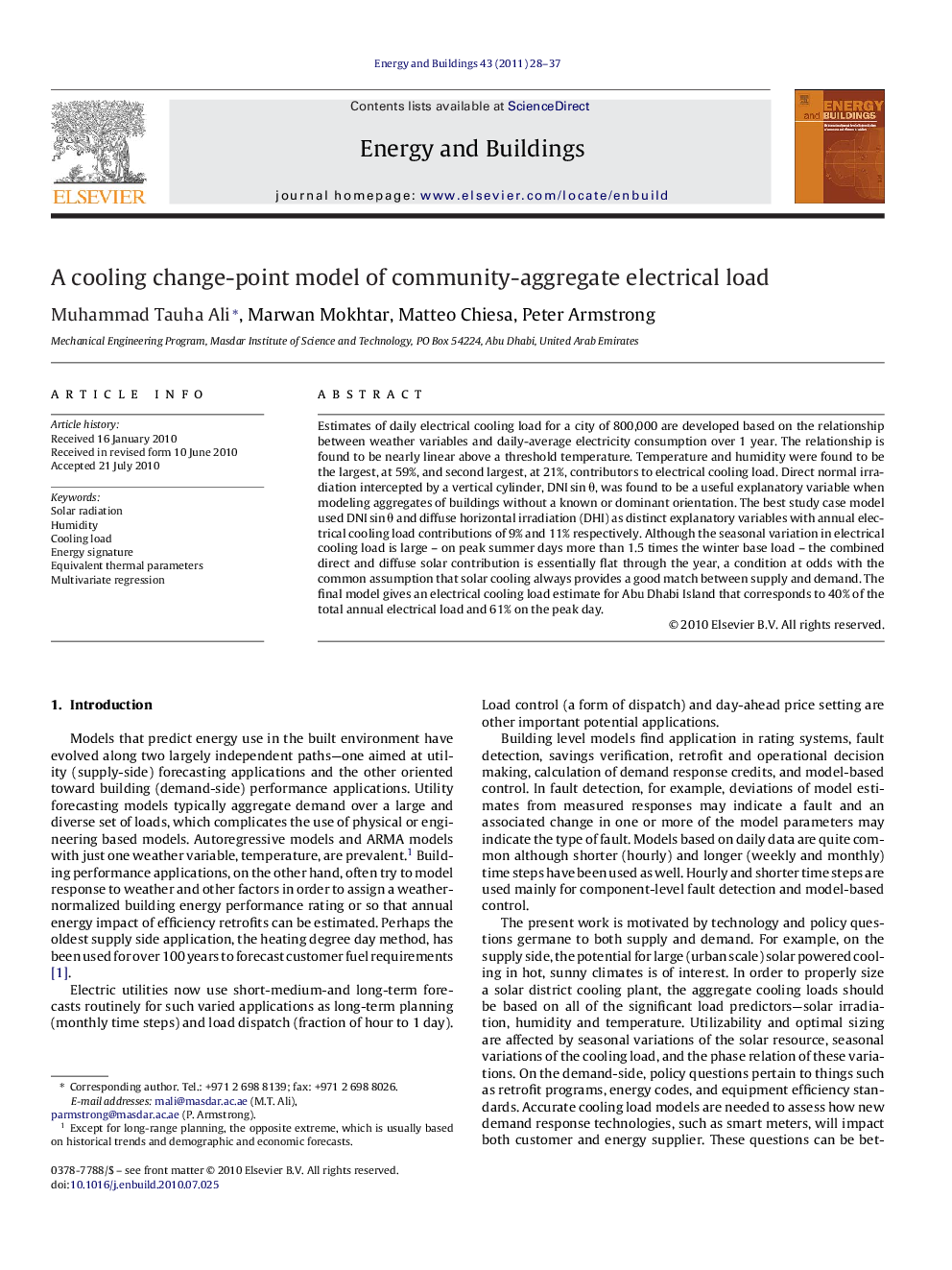| Article ID | Journal | Published Year | Pages | File Type |
|---|---|---|---|---|
| 264443 | Energy and Buildings | 2011 | 10 Pages |
Estimates of daily electrical cooling load for a city of 800,000 are developed based on the relationship between weather variables and daily-average electricity consumption over 1 year. The relationship is found to be nearly linear above a threshold temperature. Temperature and humidity were found to be the largest, at 59%, and second largest, at 21%, contributors to electrical cooling load. Direct normal irradiation intercepted by a vertical cylinder, DNI sin θ, was found to be a useful explanatory variable when modeling aggregates of buildings without a known or dominant orientation. The best study case model used DNI sin θ and diffuse horizontal irradiation (DHI) as distinct explanatory variables with annual electrical cooling load contributions of 9% and 11% respectively. Although the seasonal variation in electrical cooling load is large – on peak summer days more than 1.5 times the winter base load – the combined direct and diffuse solar contribution is essentially flat through the year, a condition at odds with the common assumption that solar cooling always provides a good match between supply and demand. The final model gives an electrical cooling load estimate for Abu Dhabi Island that corresponds to 40% of the total annual electrical load and 61% on the peak day.
